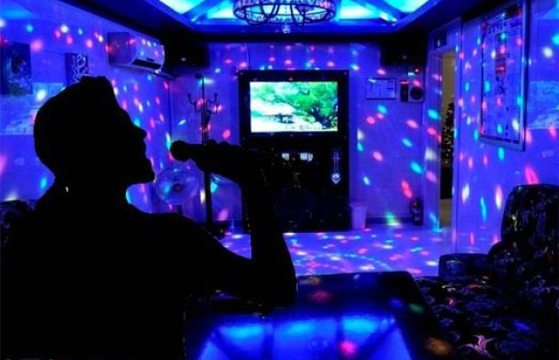About Korea
Historical Places in Seoul
The most fascinating point about visiting Seoul is that you can feel the dynamics of Korean heritage and city vibe at the same time. Korea has a beautiful nature and a wealth of priceless cultural heritage as befits its five thousand year history and traditional culture. Visit 4 royal palaces to imagine your royal palace life in the Joseon Dynasty.
How to Enjoy the Palaces Even More?
[WHAT IS HANBOK?]
Hanbok is the traditional attire of the Korean people.
Nowadays, it is only worn on special occasions or anniversaries. It is a formal wear and many Koreans keep a Hanbok for such occasions.
There are several Hanbok rental shops around Gyeongbokgung Palace.
Wear Hanbok and enter Royal Palaces for free!

The Royal Guard Changing Ceremony reenacts the guard-changing procedure that took place during the Joseon dynasty, along with the reproduction of costumes and weapons, based on historical records.
Check out the Royal Guard Changing Ceremony schedule.
- In Front of Gyeongbokgung
-
[Royal Guard Changing Ceremony]
10:00, 14:00 / 20 minutes per ceremony
[Ceremony of Guarding Gwanghwamun Gate]
11:00, 13:00 / 10 minutes per ceremony
- In front of Deoksugung
-
[Royal Guard Changing Ceremony]
11:00, 14:00 / 20 minutes per ceremony

Featuring the latest Hallyu trend, visitors will be able to discover restaurants and attractions frequented by popular Hallyu stars while walking along the Hallyu K-Star Road.
The road is separated into four zones :
Zone B the area between Hakdong Sageori Intersection and Cheongdam Sageori Intersection
Zone C the area between Cheongdam Sageori Intersection and southern crossroad of Yeongdongdaegyo Bridge
Zone D the area between Dosan Park Sageori Intersection and Sinsa Station Sageori Intersection.
In particular, Zone D includes Sinsadong Garosu-gil Road, a popular spot in Seoul


Located in Yongsan, Hybe Insight is a space where people can share the power of music through communication.
Basement floor 2 provides five different areas where music can be interpreted in different ways, while basement floor 1 provides a space to enjoy music in a whole new level.

Noraebang (노래방), formed by norae (song or sing) and bang (room), literally means a room to sing.
Nowadays, you can find norebang everywhere in Korea, especially in recreational areas or student areas.
You can look at the signboard and you'll see the word 노래방, the Korean name of norebang.

It is said that to truly understand a country's culture, you must first experience its food. There are many things to enjoy in Korea, including Hansik, the Korean cuisine. The Korea Tourism Organization has chosen the following 14 best dishes that are rated “must-eat” foods when in Korea. Let’s learn more about these dishes that are sure to impress!

Bibimbap
Rice with nutrient-packed flavor

Samgyetang
Chicken soup to rejuvenate in summer

Bulgogi
Marinated grilled beef

Naengmyeon
Cool and refreshing noodle soup

Kimchi
Over 1,500 years of fermented tradition

Sundubu jjigae
Soft tofu stew

Mandu
Korean traditional dumpling

Galbi jjim
Soft and tender braised beef short ribs

Jeyuk bokkeum
Sweet and spicy marinated pork

Pajeon
Perfect snack paired with makgeolli on a rainy day

Japchae
Glass noodle stir fried with vegetables and meat

Gimbap
Rice roll filled with various vegetable and meat

Tteokbokki
Spicy and sweet rice cake stew, the soul of K-street food

Dak gangjeong
Fried chicken and great with all drinks
Visit here to find out more about Hansik.
KTO (Korean Tourism Organization) introduces diverse cooking classes how to make popular dishes like Kimchi, bulgogi, bibimbap, tteok, and royal cuisine. Check out more information for cooking classes by visiting Korean Cooking Classes
The Korean alphabet, known as Hangeul is the modern official writing system for the Korean language.
Hangeul was created in 1443 CE by King Sejong the Great in an attempt to increase literacy by serving as a complement (or alternative) to the logographic Sino-Korean Hanja along with the usage of Classical Chinese.
Hangeul is believed to be the most scientific writing system because its characters are based on the shapes of the parts of the human body used to enunciate.
For example, the first alphabet, ㄱ, is shaped like the root of the tongue blocking the throat and makes a sound between /k/ and /g/ in English.
The National Hangeul Museum was established to preserve, spread, and develop the Korean alphabet, Hangeul.
The museum is comprised of the Hangeul library on the first floor, a permanent exhibition hall, “ㅎ Café”, and cultural product shop on the second floor, and a planned exhibition hall and Hangeul playground for children and foreigners on the third floor.


Visit National Hangeul Museum to find out more about Hangeul!
- Address: 139, Seobinggo-ro, Yongsan-gu, Seoul (서울특별시 용산구 서빙고로 139) / Hangeul Library (1F)
- Directions: Walk approx. 5 min from Ichon Station (Seoul Subway Line 4, Gyeongui Jungang Line), Exit 2
- Operating hours: Sunday-Friday & Public holidays 10:00-18:00 Saturdays, the last Wednesday of every month 10:00-21:00
- Closed: January 1 (Lunar New Year's Day) & Chuseok (Korean Thanksgiving Day)
- Admission: Free
<Sources from Korea Tourism Organization>
With Mount Bugaksan to its rear and Mount Namsan in the foreground, the site of Gyeongbokgung Palace was at the heart of Seoul and, indeed, deemed auspicious according to the traditional practice of geomancy offices.
http://www.royalpalace.go.kr:8080/html/eng_gbg/main/main.jsp

Though it has been treasured by Koreans for centuries, Changdeokgung Palace was recognized as a World Cultural Heritage site by the UNESCO World Cultural Heritage Committee in December of 1997 during the committee meeting in Naples, Italy.
http://www.cdg.go.kr/eng/

Located at the corner of Seoul’s busiest downtown intersection, Deoksugung Palace is famous for its elegant stone-wall road.
Deoksugung Palace is virtually two palaces in one-a Korean traditional complex blessed with numerous examples of late-Joseon palace architecture, and a Western-style palace complex comply with two imposing neoclassical structures and Korea’s first Western-style garden.
http://www.deoksugung.go.kr/en/

During the reign of King Seongjong , the palace was renovated and renamed to Changgyeonggung Palace. It later became a park with a zoo and a botanical garden during Japanese colonial rule.
http://english.cha.go.kr/html/HtmlPage.do?pg=/royal/RoyalPalaces_3.jsp&mn=EN_02_03_04































